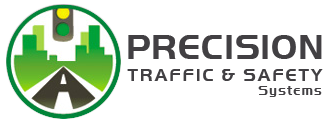The following are several use cases for communication-based intersection safety that can be supported by wireless communication.
Prevention of traffic light violation
In this use case, an infrastructure-based intersection assistant can use communication to inform approaching vehicles about the traffic light’s status and the remaining time until the status changes. Since a traffic light system is inherently complex and involves many inputs such as inductive loops and push buttons for pedestrians, traffic light can change unpredictably. For this reason, real-time communication is necessary to provide vehicles with accurate and up-to-date signal phase of a traffic light. Given a traffic light’s status, a vehicle can deliver a warning to a driver when a potential traffic light violation is detected. Further, the vehicle can also adjust its velocity to achieve optimized fuel consumption.
Prevention of turning and crossing-path collision
This use case assists drivers in their turning or crossing-path maneuvers at an intersection. Sensors installed at an intersection can detect objects and vehicles and construct an overview of the intersection. This view can be broadcast at a regular interval on the wireless channel to inform a driver about the presence of other road users at an intersection. Further, communication can be used as an enabling technology for cooperative fusion of sensor data acquired in vehicles and at the infrastructure side. Cooperative data fusion provides a driver with a better vision of an intersection and helps detect other road users that the driver would overlook due to obstacles, distraction, or bad weather. Special protection for vulnerable road users (VRUs) can be obtained.
Prevention of rear-end collision
This use case can provide a dynamic traffic signal adaptation when an accident occurs at an intersection. In this case, an intersection assistant can broadcast an alert on the wireless communication channel. Further, in case a vehicle causes an accident, it can also send an emergency message to the infrastructure to trigger an all-red traffic light and prevent other vehicles from entering the intersection until the situation becomes clear. In emergency scenarios, an intersection can also support prioritized road users, e.g., emergency vehicles by giving them the green light in their direction.
Traffic signal adaption for emergency warning and prioritized road users
In this use case, RSUs can monitor road conditions and traffic density at intersections and provide a backend traffic management center with real-time information. Using this information, the traffic management center can obtain a global view of road systems and can compute alternate routes for vehicles. The traffic management center sends this information back to RSUs to inform the drivers. Drivers can use this information to optimize their route selection according to their needs.
